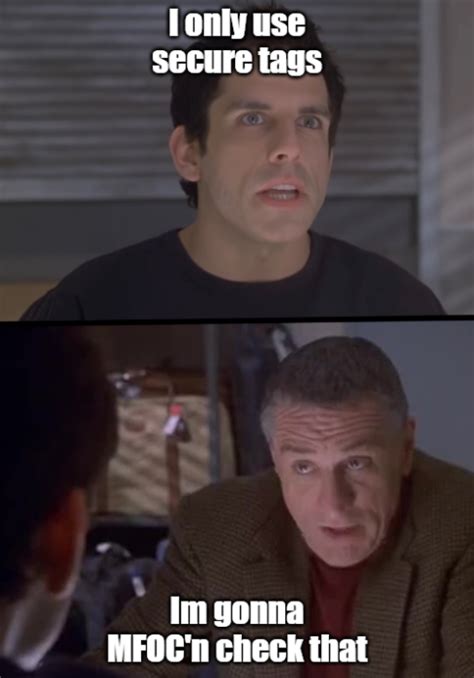mfoc write data to mifare card This program allow to recover authentication keys from MIFARE Classic card. Please . TIL: You can use old credit cards as NFC tags. Don't know why I never thought about this, but .
0 · gaylord M FOCker
1 · GitHub
Nintendo - All Amiibo data belongs to Nintendo, courtesy of NFC-Bank (site was shut down in late 2020). u/amiibolover99 - Special thanks to u/amiibolover99 for providing Series 5 .bin data ripped from real Amiibo cards. TagMo - without .
This program allow to recover authentication keys from MIFARE Classic card. Please . It’s a technology that uses electromagnetic fields to transmit data that a receiver catches from an RFID tag. It is mostly one-way: tag -> reader . The reader is also refered to as .
We’re going to use nfc-mfclassic (part of libnfc) to write the data we dumped on another NFC card. You’ll need its A and B keys too. If it’s brand new it should be 0xffffffffffff by default.This program allow to recover authentication keys from MIFARE Classic card. Please note MFOC is able to recover keys from target only if it have a known key: default one (hardcoded in MFOC) or custom one (user provided using command line). It’s a technology that uses electromagnetic fields to transmit data that a receiver catches from an RFID tag. It is mostly one-way: tag -> reader . The reader is also refered to as interrogator. The easiest and most basic tool to use against MIFARE tags, is MFOC. It tries different keys against a MIFARE tags. Once MFOC finds a correct key the tool can “guess” the other keys and dump the memory of the tag.
You can easily calculate block numbers from sector numbering using mfc.sectorToBlock() and mfc.getBlockCountInSector(). Block 0 (in sector 0) is a special block, the manufacturer block. It typically contains the UID, SAK and manufacturer information burned into the tag during the production process.
[Guillermo] was able to use a tool called mfoc to dump the keys and data off the card. From there, he was able to determine that the credit for the vending machines was stored on the card.
This app lets you add your own keyfile (“Add/Remove Keys”) cracked by mfoc. Just create a new key file and insert your keys one per line. Using the write option you can write exactly one block back to the tag, or reflash a complete memory dump. You are using the file mfoc_output.mfd both as the destination file for dumping the card contents and as a source file for the key material to access the sectors of the card. Typically this is not what you want as this would overwrite your key file. To be able to decrypt the content of the card, the keys must be found. There are two well-known applications for this: mfcuk [6] and mfoc [7]. A typical attack scenario is to use mfcuk to find the first key of the card (which may take quite some time).
I think the original Mifare classic card's UID is only being used so I could just copy the UID to the magic card's sector 0. But - I appear to have an entire dump, so is there a Windows program that uses the MFOC dump file to clone the card? We’re going to use nfc-mfclassic (part of libnfc) to write the data we dumped on another NFC card. You’ll need its A and B keys too. If it’s brand new it should be 0xffffffffffff by default.
This program allow to recover authentication keys from MIFARE Classic card. Please note MFOC is able to recover keys from target only if it have a known key: default one (hardcoded in MFOC) or custom one (user provided using command line).
It’s a technology that uses electromagnetic fields to transmit data that a receiver catches from an RFID tag. It is mostly one-way: tag -> reader . The reader is also refered to as interrogator. The easiest and most basic tool to use against MIFARE tags, is MFOC. It tries different keys against a MIFARE tags. Once MFOC finds a correct key the tool can “guess” the other keys and dump the memory of the tag.
You can easily calculate block numbers from sector numbering using mfc.sectorToBlock() and mfc.getBlockCountInSector(). Block 0 (in sector 0) is a special block, the manufacturer block. It typically contains the UID, SAK and manufacturer information burned into the tag during the production process. [Guillermo] was able to use a tool called mfoc to dump the keys and data off the card. From there, he was able to determine that the credit for the vending machines was stored on the card.
This app lets you add your own keyfile (“Add/Remove Keys”) cracked by mfoc. Just create a new key file and insert your keys one per line. Using the write option you can write exactly one block back to the tag, or reflash a complete memory dump. You are using the file mfoc_output.mfd both as the destination file for dumping the card contents and as a source file for the key material to access the sectors of the card. Typically this is not what you want as this would overwrite your key file.
gaylord M FOCker
To be able to decrypt the content of the card, the keys must be found. There are two well-known applications for this: mfcuk [6] and mfoc [7]. A typical attack scenario is to use mfcuk to find the first key of the card (which may take quite some time).

nfc tag iso 14443
nfc tag galaxy s7

When you interact with our mobile applications or online services, we and .
mfoc write data to mifare card|GitHub